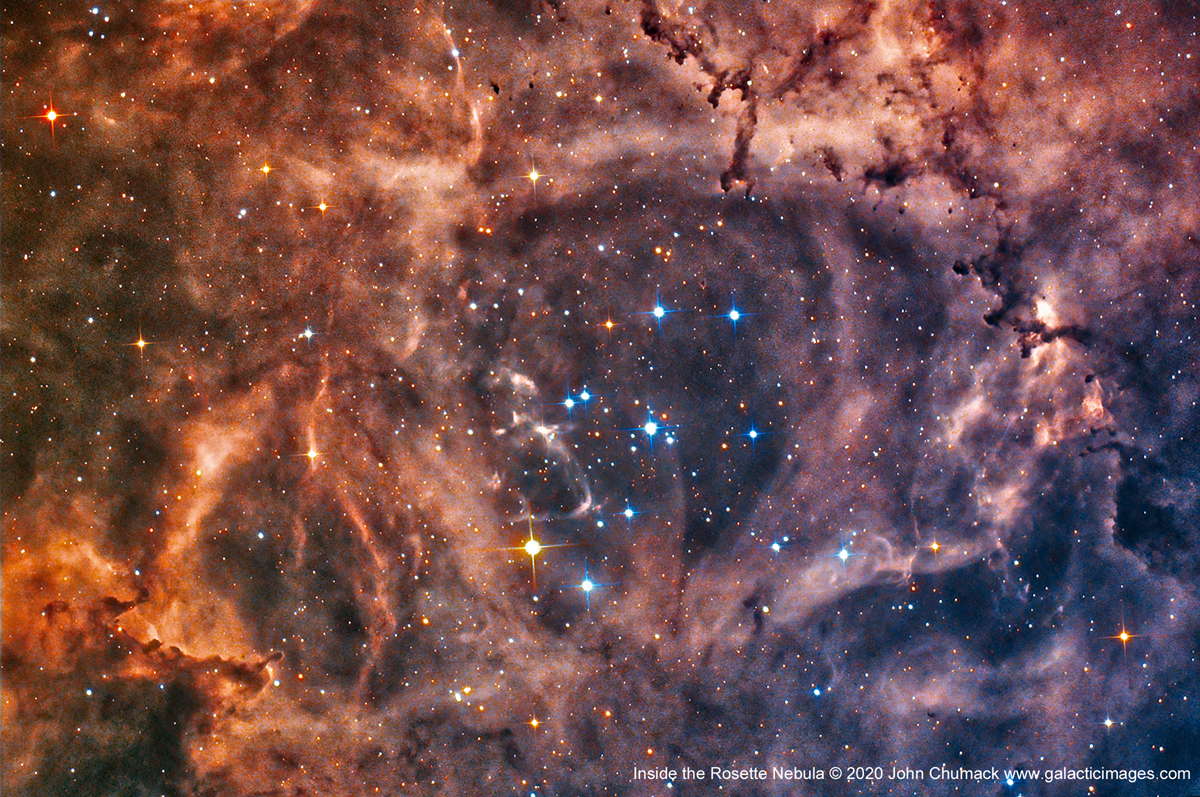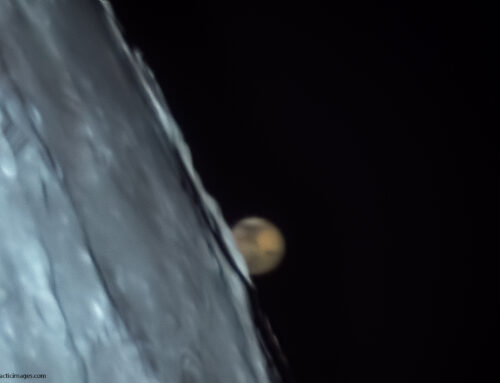Here is my Close-up View Inside The Rosette Nebula (also known as Caldwell 49) is a large spherical H II region (circular in appearance) located near one end of a giant molecular cloud in the Monoceros region of the Milky Way Galaxy.
The pretty open cluster NGC 2244 (Caldwell 50) is closely associated with the nebulosity, the stars of the cluster having been formed from the nebula’s matter.
The complex has the following NGC designations:
NGC 2237 – Part of the nebulous region (The whole nebula)
NGC 2238 – Part of the nebulous region
NGC 2239 – Part of the nebulous region
NGC 2244 – The open cluster within the nebula (Caldwell 50)
NGC 2246 – Part of the nebulous region
The cluster and nebula lie at a distance of some 1600 Parsecs or 5,200 light-years from Earth and measure roughly 130 light years in diameter. The radiation from the young stars NGC 2244 (Near Center) excites the atoms in the nebula, causing them to emit radiation themselves producing the emission nebula we see. There are many fine details visible along with Dusty Dark features known as Bok Globules, dust cocoons collapsing and forming new stars. This Massive Stellar Nursery(Star Formation Region) in the Unicorn Constellation of Monoceros.
I captured this nice detailed close-up HA+RGB image using my C6 F5 Newtonian telescope, Coma Corrector, Bisque MyT Mount, SkyX & ASCOM, QHY 183C cooled Cmos Color Camera for the RGB, and my QHY183M Cooled monochrome Cmos camera for the Hydrogen Alpha light portion of this image. This is a 145 minute exposure total from two nights, Hydrogen Alpha Light for 90 minutes on 12-19-2019 and 55 Minutes for RGB One shot color camera on 03-01-2020. 180 sec subs for HA & 300 sec subs for RGB.
Best Regards,
John Chumack
www.galacticimages.com







